Striking, astute and affable, Allison Glenn cultivates her interest in contemporary fine arts and urban studies while creating platforms to investigate and rejuvenate diverse communities. The COMP Magazine recently caught up with this exciting and busy young lady to discuss her curatorial practice, the terrain between non-profit and commercial ventures, and why the arts are an essential component for developing healthy communities throughout Chicago and beyond.
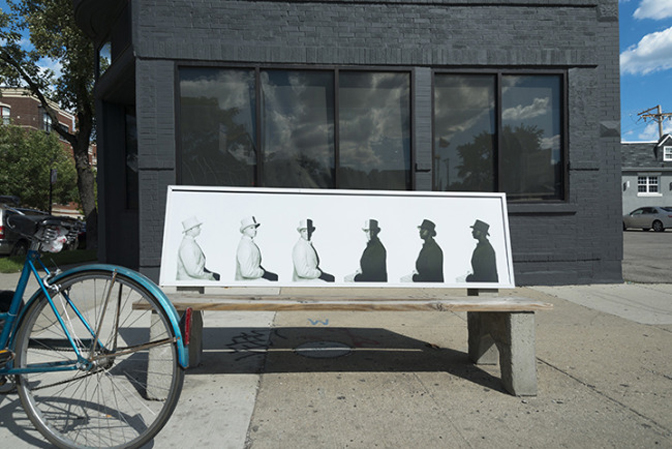
Hank Willis Thomas, Zero Hour, 2014, installation view at the intersection of Western and Wabansia, Chicago,
Image courtesy of the artist and Monique Meloche Gallery, Chicago.
Lets start with a little background. You are a Detroit transplant who as studied in Detroit, Manchester, England, and completed your Master’s studies at SAIC in Modern Art History, Theory and Criticism & Arts Administration. Can you share your trajectory or how your curatorial practice has developed over time?
It is only after looking back on my experience that I can fully grasp the reasoning behind the research and educational choices I have made, and how they’ve been part of a larger trajectory that has revealed itself to me over time. I attended Wayne State University in Detroit for my undergraduate studies, where I obtained a BFA in Photography and a co-major in Urban Studies, through the College of Urban, Labor, and Metropolitan Affairs. The intimate and focused studio-based degree was coupled with an expansive immersion into the history of Detroit. I spent many hours traversing the landscape of the city, taking photographs and exploring the neighborhoods, while learning of former public policy, such as housing discrimination, that all too often crippled the city. I was interested in how the arts could become a catalyst for neighborhood regeneration, and that interest led me abroad.
I studied in Manchester, England, when I was 21. Manchester and Detroit are sister cities, as both had their industrial revolutions around the same time; Detroit with Ford Motor and the assembly line, and Manchester with textiles. Manchester had been able to use many of their old factories and warehouses for kunsthalles, lofts, film houses, etc. It was there that I received my introduction to continental theory, coupled with the eye opening experience of other cities that worked.
When I returned to Detroit, I began curating exhibitions at 4731 Art Gallery and 555 Art Gallery, both on Grand River, the Bankle Building on Woodward, and at my undergrad, Wayne State. There was no blueprint, for which I am thankful, as it really challenged me to believe in what I was doing even if I was not quite sure of what I was doing!
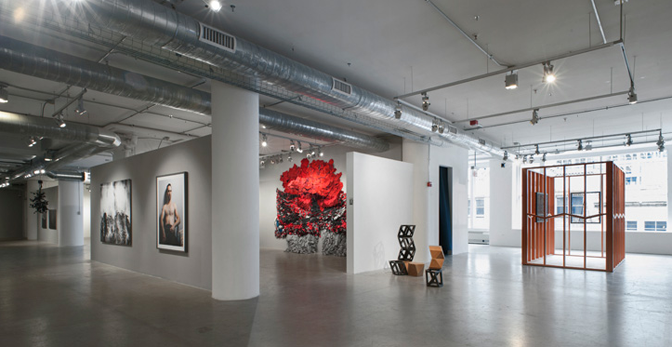
School of the Art Institute of Chicago 2012 MFA Exhibition, installation view, Sullivan Galleries, April – May 2012
A few years passed and I moved to Chicago, and worked with many of the artists and creative energy that converged on Milwaukee Avenue in Wicker Park (things have changed so much in that neighborhood). While I studied at SAIC, where I obtained dual Masters degrees in Art History, Theory, Criticism and Arts Administration and Policy, I had the privilege of working with Michael Ryan in the Office of Exhibition Practices. My responsibilities were primarily working with off campus exhibitions, and one of my projects was the 18 S. Wabash pop-up exhibition space. The focus was installation-based projects, and the artists that exhibited were Jesse Butcher and Stephen Frost; Benjamin Stagl, Liene Bosquê, and Kyunghwa Shon. During the summer of 2011, I had the opportunity to work at the Hammer Museum in LA, in a Graduate Curatorial position, providing scholarly research, writing, and administrative support to curator Kellie Jones, and Curatorial Fellow Naima Keith, for the Now Dig This! Art and Black Los Angeles 1960-1980 an exhibition that was part of the Pacific Standard Time Initiative of the Getty Research Institute. When I returned to grad school the following Fall, I began a year-long Curatorial Fellowship with Sullivan Galleries for the 2012 SAIC MFA Exhibition, working on a team led by curator Tumelo Mosaka.
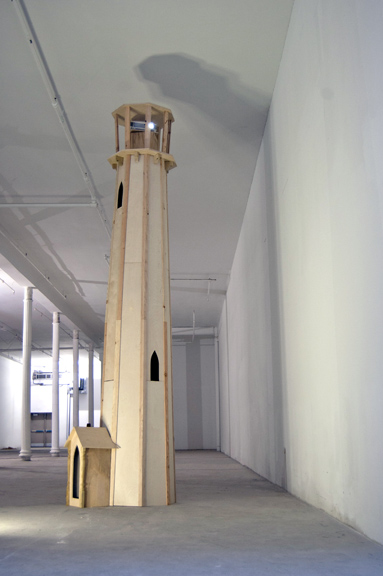
Benjamin Stagl: Carceral City, installation view, 18 S. Wabash, School of the Art Institute of Chicago, December 2010 – February 2011
An ongoing area of my research is the nexus of contemporary art and curatorial practice as it is expressed through the interaction with mid-level, contemporary art institutions. Throughout my graduate studies, I assessed mid-level and alternative exhibition spaces such as the Museum of Contemporary Art Detroit, the Hyde Park Art Center in Chicago, the Substation and Post-Museum in Singapore, Osage Art Foundation in Hong Kong, 3331 Arts Chiyoda in Tokyo, Machine Project and LAXART in Los Angeles, and Andrea Zittel’s High Desert Test Sites in Joshua Tree, California. I had the opportunity to visit and learn from these institutions, comparing and contrasting their unique curatorial methodologies.
Upon graduating, I began working with Theaster Gates as a Research Fellow, where I was able to further my interests. I then moved on to become the inaugural Program Manager at the Arts Incubator in Washington Park. The Arts Incubator is the flagship building of the Arts + Public Life Initiative, for which Theaster is the Director. The program provides a platform for Chicago-based artists to thoughtfully engage the global, contemporary art world in a localized environment.
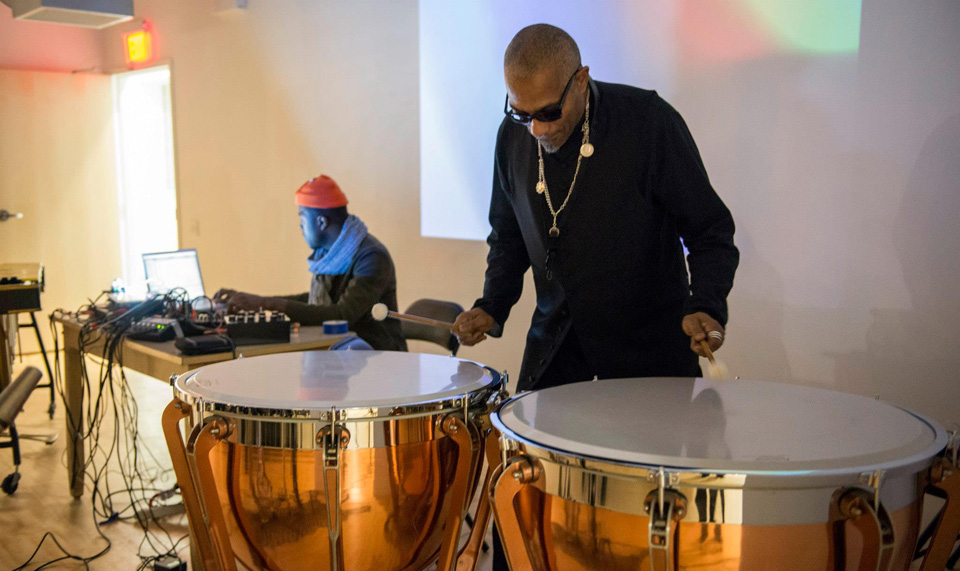
Terry Adkins, Kamau Patton, and Blanche Bruce of the Lone Wolf Recital Corps perform as part of Feedback,
Arts Incubator, March – April 2013
After managing over 80 public programs, seven exhibitions, and much collaboration across the university and Chicago arts community, the most rewarding moments for me were the opportunities to realize the Incubator’s mission to engage the local art scene with the global; the language of which I developed. My inaugural program was an intimate performance with Terry Adkins and Kamau Amu Patton, members of the Lone Wolf Recital Corps. In May, I brought Los Angeles-based artist Edgar Arceneaux to Chicago for the first in a series of talks called Public Dialogue. I have since moved on to be the Director of Monique Meloche Gallery, a position I have held for one year.
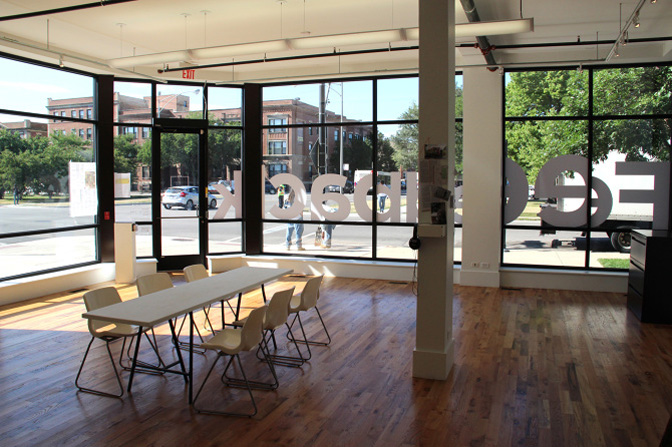
Public Dialogue: Creative Strategies for Redevelopment, Artists as Catalysts for Neighborhood Regeneration,
installation view, Arts Incubator, July 2013
As Director, I have inaugurated “off the wall”, a public art initiative that invites artists to produce site-specific installations throughout the Wicker Park Bucktown neighborhood. Our 2014 artist was Hank Willis Thomas, and in 2015 we will show the work of Joel Ross. The impetus for this project is to provide a more open platform for contemporary art that engages with the public at large on a daily basis. The series reaches a demographic much larger than the standard gallery-goers and provides an open-armed invitation to discover the arts and the potential they have to influence everyday life. The project is inspired by the success of the gallery’s “on the wall” project, which has been produced in the storefront windows of moniquemeloche since 2010. Both projects are generously supported by a grant from the Wicker Park Bucktown SSA #33.
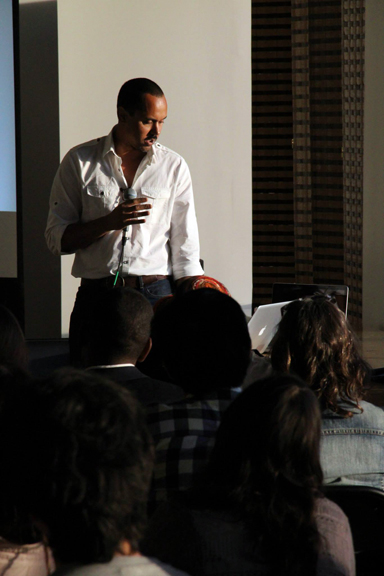
Public Dialogue #1: Edgar Arceneaux in conversation with Faheem Majeed and Brandon Johnson as part of Public Dialogue: Creative Strategies for Redevelopment, Artists as Catalysts for Neighborhood Regeneration,
Arts Incubator, 2013
I’ve also been able to introduce artists to the gallery, such as Nate Young, who recently closed his first solo exhibition with us, and who will be exhibiting as part of Present Future at Artissima Art Fair in Turin this November.
You are now the Director of Monique Meloche Gallery. Have you seen any striking contrasts between working in an academic, non-profit, or commercial setting? What are some of the new challenges you face?
There are some striking differences between working with for profits and non-profits, but at the end of the day I still have to be able to justify an expense, manage the exhibitions budget tightly, consider my audience, support the artists that I am working with, and present compelling ideas.
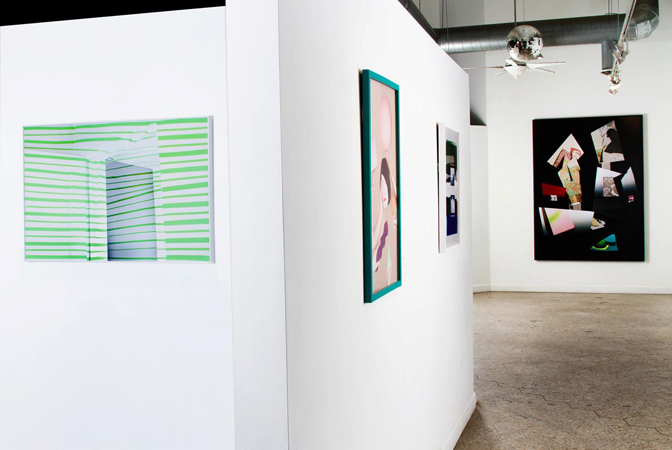
Fractal Semblance (co-curated by Stephanie Cristello), installation view, Roots and Culture Gallery, February 2013.
Photo credit: Robert Chase Heishman
You have a range of interests, including alternative art histories, post-colonial studies, hybrid art and architectural projects, among others. Is there a specific dialog that is that you see connecting these seemingly disparate interests?
Alternative art histories is a broad, umbrella term that could encapsulate all of the above. I am interested in access and equity in the arts, both at the audience level and opportunities afforded to artists.
What are you currently working upon? What’s your focus for 2015? What future exhibitions are in the works?
I am opening an exhibition April 4 called Imaginary Landscapes at the Chicago Urban Art Society’s Satellite Space at Mana Contemporary. It is an exhibition of four artists – Lisa Alvarado, Robert Burnier, Assaf Evron, and Caroline Kent – who are thinking about the uncertainty of physical space and history as they relate to knowledge of time, and the affect of time on memory. It runs through May 30.
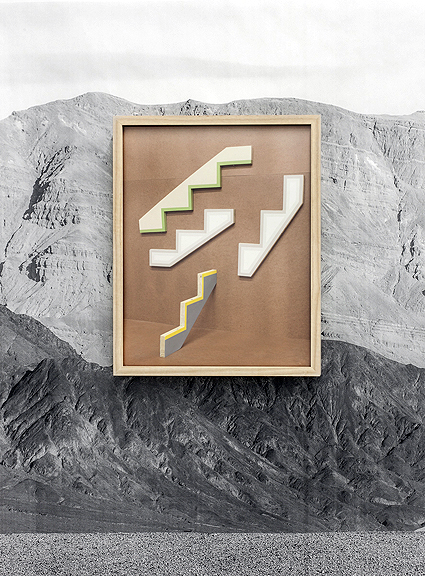
Assaf Evron, Untitled (Athens and Oraibi), 2015, Archival pigment print in ash frame
At the gallery, we are working on a summer group show that is a small overview of contemporary portraiture, and how artists are reframing Matisse, Cezanne, and Gauguin through the development of a new gaze.
As a Curatorial Fellow with the City of Chicago, I am working on a few public art initiatives that will launch Summer 2015 and Spring 2016.
For additional information on the curatorial practice of Allison Glenn, please visit:
Nate Young’s exhibition: http://moniquemeloche.com/exhibitions/but-not-yet-in-the-spirit-of-linguistics/
Bench Marks at moniquemeloche: http://moniquemeloche.com/offthewall/bench-marks/
Allison Glenn: http://cargocollective.com/allisonglenn/Allison-Glenn-Biography
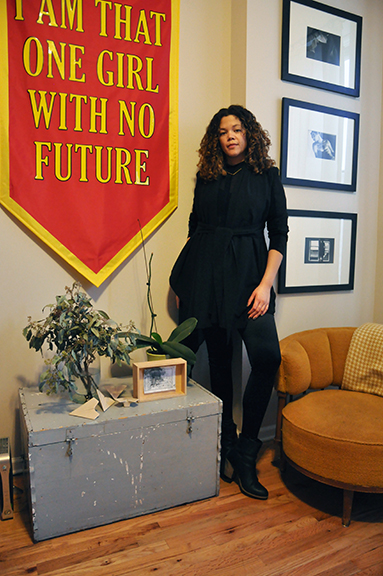
Allison Glenn, art historian and curator, Chicago, 2015
Interview and portrait by Chester Alamo-Costello


